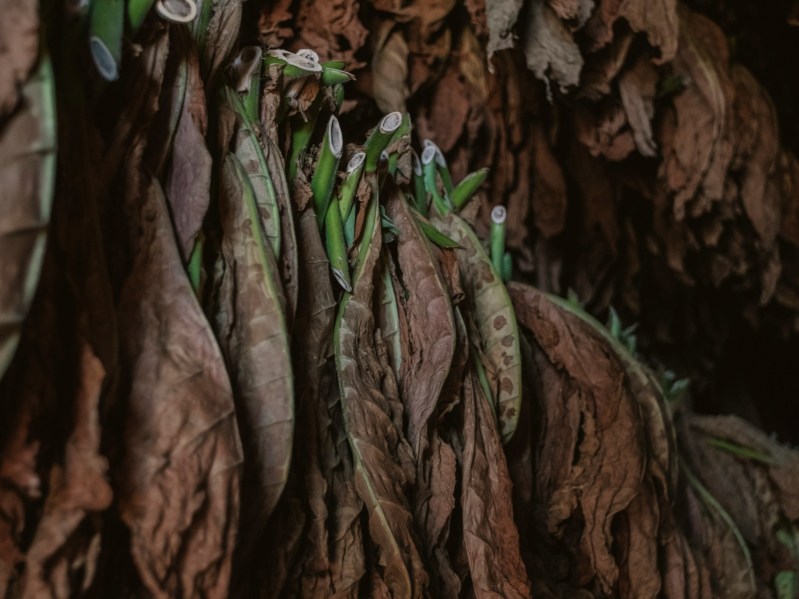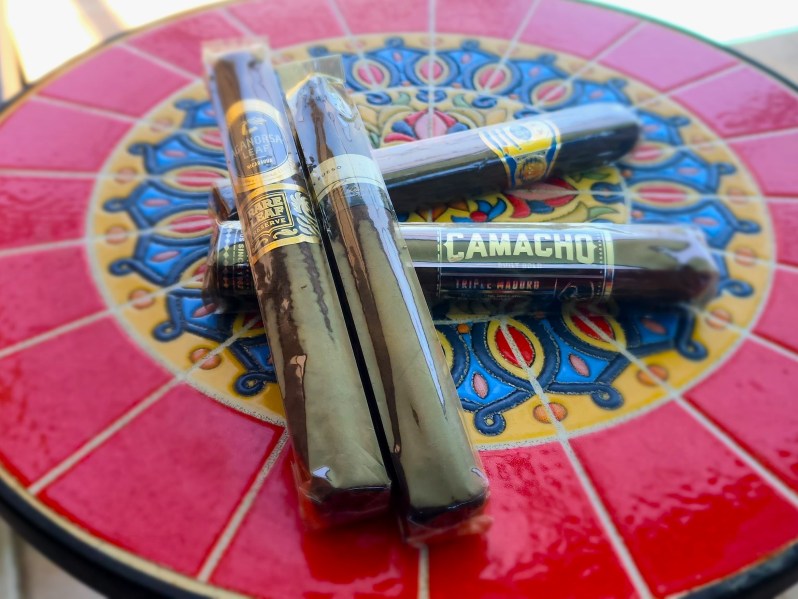
Cigars are composed of various tobacco leaves, including fillers, a binder, and a wrapper on the outside. The tobacco that makes up those leaves is grown in a variety of regions worldwide and undergoes several processes to create the flavor and blend that is eventually rolled into a premium cigar. While many factors influence the result, mainly how the tobacco tastes when it’s smoked, none are more important than its cultivation, growth, and harvest. Tobacco grown in Nicaragua will taste very different from tobacco grown in Cuba or even Indonesia. It has to do with the local climate, the soil and its contents, average sun exposure, and much more. But most cigars include a blend or mixture of tobacco leaves, sometimes from entirely different regions, like Nicaraguan fillers and an African Cameroon wrapper. So, when posing the question, “Where do cigars come from,” it makes more sense to look at the regions where tobacco is grown.
The Big Five

Not all tobacco comes from the Big Five regions; however, a large majority of the tobacco leaves produced and sold, even to partners in the business, come from fairly localized tobacco growers in the following locations:
Cuba
Everyone has heard of Cuban cigars, Cuban tobacco, and the forbidden fruit, at least in the United States. Ever since the U.S. government activated an embargo against Cuban goods back in 1962, Cuban tobacco cannot be imported or sold in the country. Of course, that doesn’t change the fact that Cuba is the birthplace of modern cigars and has inspired many of today’s biggest tobacco producers in the world.
The most prominent growing regions in Cuba are Vuelta Abajo, Pinar del Rio, San Luis, San Juan y Martinez, Semi Vuelta, Partido, Havana, and Vuelta Arriba.
Give these a try:
You can’t legally purchase Cuban cigars in the United States, but you can find many Cuban seed and Habano-wrapped cigars produced in neighboring regions.
Dominican Republic
Many Cubans fled to the Dominican Republic during the revolution, bringing along Cuban-seed tobaccos. The region has always been known for growing rich and vibrant tobaccos, for centuries, but the Cuban exodus in the 1960s also sparked a historic rise in production. Since then, Dominican tobacco has become known as some of the highest-quality on the market thanks to thriving operations and highly-favorable growing conditions for Cuban-seed strains.
The Dominican Republic’s most prominent growing region is in the northern part of the country, in the Cibao River Valley, relatively close to the city of Santiago. Another location is the Yaque Valley, located in the country’s western part.
Give these a try:
Honduras
No stranger to tobacco production, Honduras has been in the business for decades. But much like the Dominican Republic, it saw a boom during the Cuban revolution. It is also one of the top three exporters of tobacco, mainly to the United States. Many Cuban-seed and Connecticut-seed strains are grown there.
In the province of El Paraiso, the Jamastran Valley and the nearby town of Danli are the biggest production spots for local tobacco. Interestingly, they are located near the Nicaraguan border — another major region responsible for tobacco growth.
Give these a try:
Nicaragua
Nicaragua is the top country and the number one tobacco exporter to the United States. That’s because the fertile soil is ideal for virtually all kinds of tobacco, including Sumatra, Maduro, Sun Grown, Cuban seed, Connecticut seed, and many more. The country is responsible for providing some of the world’s most robust, high-quality and flavorful tobacco.
Most tobacco is grown in Esteli, but some other regions include Condega, Jalapa, and Ometepe — a volcanic island off the country’s southwestern coast.
Give these a try:
The United States
You may not know this, but the United States has a long and storied history of quality tobacco growth, including cigar tobacco. The Connecticut River Valley is one of the most well-known growing regions in the country, responsible for — you guessed it — Connecticut shade and Connecticut-seed tobacco. While Connecticut, Shade and Broadleaf are the most prominent, Connecticut Corojo wrappers are also grown in the U.S. By the way, Connecticut cigars are excellent to smoke while golfing.
The Connecticut Valley is a dead giveaway for Connecticut and Pennsylvania, two prime regions for tobacco growth in the country. Tobacco is also grown in Florida, Kentucky, Georgia, Louisiana, Tennessee, Virginia, and the Carolinas.
Give these a try:
Other tobacco growing regions:

The Big Five have a significant impact on the cigar industry as a whole, but tobacco and cigar production happens all over the world. Here are some other major tobacco producers worth noting:
Africa
Cameroon, known for the Sumatran seed, and the Central African Republic are Africa’s two biggest tobacco producers. They are so close that they are sometimes interchangeably referenced. The fertile soil, ample sunlight, and local conditions make for a thriving tobacco industry.
Try:
Brazil
Like many South American countries, Brazil has been producing tobacco for ages. But most of it stayed local until the Cuban revolution.
The Bahia region cultivates most of Brazil’s tobacco and is a prominent Arapiraca, Brazilian Sumatra, and Mata Fina grower. You’ll quickly notice that all of those tobaccos are unique, like the Mata Fina, which lends super sweet and floral notes to the blends it is used in.
Try:
Costa Rica
Like Ometepe, Nicaragua, Costa Rica is renowned for its vibrant and volcanic soil, which gives plants grown in the region a unique flavor profile. Tobacco production hasn’t been as big for this Central American country as others, but that’s changing. Maduro tobaccos are coming out of Costa Rica more often.
Most of Costa Rica’s tobacco is grown in the mountainous area of Puriscal, not just because of the local volcanic soil but also because of ideal climate conditions like rainfall, humidity, and equally dry periods.
Try:
Columbia, Peru, and Venezuela
These three are bundled together because, while they do produce tobacco, it’s grown and exported on a much smaller scale than the other countries listed here. Peru and Venezuela especially are starting to see more premium-focused operations, with Peruvian filler leaf being the stand-out, at least right now.
Ecuador
Following the same trajectory as many other tobacco exporters, Ecuador became associated with premium cigar tobacco in the 1960s during the Cuban Revolution. That said, Ecuador’s farmers had been growing tobacco much longer than that. Today, it’s most known for Connecticut and Sumatra seed varieties.
Ecuadorian tobacco is grown in the Andean mountains, with mountainous and thick volcanic soils responsible for its best production.
Try:
Indonesia
There’s quite a bit of overlap across regions regarding what types of tobacco are grown and where. For example, Indonesia is known for Sumatra-seed tobacco, also grown in Honduras and Ecuador.
Central Java, East Java, and West Nusa Tenggara are some of the country’s most extensive tobacco-growing regions.
Try:
Philippines
Most tobacco grown in the Philippines stays local, outside of some used as filler in varying blends. Premium tobacco is not a focus of the country’s exports, then.
Despite that, 23 provinces across the country are responsible for major tobacco production, including Ilocos Norte, Ilocos Sur, Abra and La Union. Virginia, Burley, and Turkish tobacco are the most common, and they are primarily used for cigarettes and pipe tobacco.
Puerto Rico
During two periods, dubbed Puerto Rico’s “Golden Age of Tobacco,” from 1907 to 1921 and 1921 to 1940, tobacco was one of the country’s leading exports. Today, that’s no longer the case, and most of the tobacco produced in the country is not used in premium cigars. There are a few local reasons for that change. Also, Hurricane Maria destroyed most of PR’s crops in 2017.
Small farmers are doing their best to reinvigorate the island’s tobacco industry.
Mexico
It should come as no surprise that Mexico is a top producer of Mexican-Sumatra and San Andres tobacco grown in the San Andres Valley. A crazy fact is that San Andres seed tobacco predates Cuban seed, stretching back to the Mayans.
Located in Southeast Mexico, nestled between two dormant volcanoes, the region is known for its dark, oily tobaccos like San Andres Negro. Tobacco is also grown in Mexican coastal states like Chiapas, Nayarit, and Veracruz.
Try:
Get to know our expert

Why should you listen to me? It’s a valid question. I smoke cigars all the time, and I have many recommendations and plenty of advice to share with others. But none of those things qualify me as an expert. Instead, it’s the years of experience, the time I’ve invested in the world of cigars, the excellent connections I’ve made with cigar makers and sellers, and the vast wealth of knowledge I’ve gained during that time. I’m always curious about the cigar industry and general production, and I’ve spent dozens of hours researching how they’re made in my own time. I know what goes into an excellent cigar, and I’ve certainly earned the right to recommend some to others, whether you’re a beginner and this is your first time smoking or have your own cabinet humidor stocked and maintained. Instead of waxing poetic, I’d rather let my recommendations speak for me.



